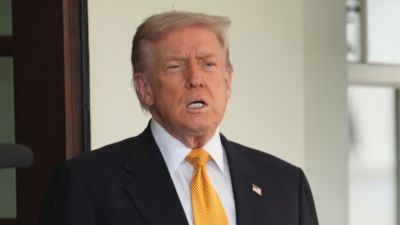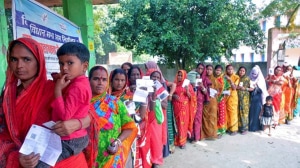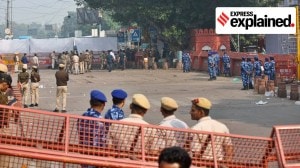As Left, Congress inch together in Tripura, a look at the friends with so far few benefits
Once foes, they have found each other's company out in the electoral cold. For CPM, it is a decision that off and on – even as recently as last year – calls for ideological soul-searching
 CPM general secretary Sitaram Yechury had a meeting with AICC in charge of Tripura Ajoy Kumar over the alliance. (Express File Photo)
CPM general secretary Sitaram Yechury had a meeting with AICC in charge of Tripura Ajoy Kumar over the alliance. (Express File Photo) Friends-of-need Congress and CPI(M) are set to enter another phase in their relationship, with an alliance for the Tripura Assembly elections. While the West Bengal distance has already been bridged by the two parties, in Kerala, they remain firm foes – a cause for much hand-wringing, and occasional ideological anguish, especially within the CPI(M).
For the period after Independence, a friendship between the two would have been deemed impossible. The Congress was the main pole in Indian politics, and the Left among its main challengers, forming the first non-Congress government in the country in Kerala in 1957. It had been dismissed within two years by the Congress government at the Centre led by Jawaharlal Nehru.
The chief minister of that government and legendary Communist leader E M S Namboodiripad declared in the 1980s that he would even ally with the devil to defeat the Congress.
In distant West Bengal, the other Left bastion, the turbulent 1970s saw brutal and bloody clashes between workers of the two parties.
However, the need to keep the BJP out of power had proved the magnet that brought the opposite poles together. In 2004, the CPI(M)-led Left extended outside support to help the Congress form the government led by Manmohan Singh.
This chapter in the Congress-CPI(M) ties ended in 2008 when the Left parted ways over the Indo-US nuclear deal, bringing the Singh government to the verge of losing power.
While Singh survived and returned for a second term, 2008 was the last time the Left came within shouting distance of power in Delhi, being in free fall since. From 44 seats in the Lok Sabha in 2004, its highest ever, the CPI(M) was down to 16 in 2009.
Then came 2011, and the Left front, which had ruled Bengal since 1977, was swept out of power by the Trinamool Congress. In 2014, the CPI(M)’s Lok Sabha tally plunged to nine, and further to three in 2019.
In between, in 2018, it was ousted from its remaining pillar, Tripura.
The Congress, which was decimated in the Narendra Modi wave of 2014, has also struggled to revive itself since. It was in such dire straits after 2014 that the possibility of an alliance between the CPI(M) and Congress first came on the table.
In 2015 though, at its national conclave or the Party Congress, held usually once every three years, the CPI(M) declared: “While the main direction of the struggle is against the BJP, the party will continue to oppose the Congress. It has pursued neo-liberal policies and it is the Congress-led UPA government’s anti-people policies and massive corruption which helped the BJP acquire popular support. The party will have no understanding or electoral alliance with the Congress.”
However, this hardline stance soon started showing cracks, especially at the CPI(M)’s Bengal end. Seen to have the support of Sitaram Yechury, the party’s Bengal leadership pushed for a “tactical” tie-up with the Congress the very next year, in the run-up to the 2016 Assembly elections in the state.
Even as the central leadership – which was seen to reflect the Prakash Karat line – resisted, the state unit went ahead and entered into a tacit seat adjustment with the grand old party. The results showed that the sudden bonhomie between the foes didn’t fare well with the people — the Congress won 44 seats, the Left Front 32, while the TMC got 211.
A miffed CPM central leadership went on to publicly rebuke the state unit. “The electoral tactics evolved in West Bengal were not in consonance with the Central Committee decision based on the political-tactical line of the party, which states that there shall be no alliance or understanding with the Congress,” the CPM Politburo said.
The view was later endorsed by the Central Committee, which added that the situation should be rectified.
Come 2018, with the Lok Sabha elections looming, there was a nuancing of the position. At its Hyderabad Party Congress, the CPI(M) said the party’s main task was to defeat the BJP and its allies by rallying all the secular and democratic forces, but noted “this has to be done without having a political alliance with the Congress Party”.
Since there was no specific mention of the phrase “electoral alliance”, there was some room for manoeuvring. Sure enough, before the 2019 Lok Sabha elections, the CPI(M) and Congress held extended discussions for seat adjustments in Bengal, though these did not fructify.
Two seats specifically, Raiganj and Murshidabad, emerged as stumbling blocks as the CPI(M) refused to part with either constituency having won both in 2014. The TMC gained in the process, winning Raiganj. But it was the BJP that delivered the eye-opener to all three, winning 18 seats in a state where it was considered a fledgling party.
This finally prompted the CPI(M) to shed its ambivalence to the Congress. It became part of the RJD-led alliance with the Congress in Bihar and entered into a full-fledged electoral tie-up with the Congress to take on the TMC and the BJP in the 2021 Assembly elections in Bengal.
Even the leaders from Kerala who had been vociferously opposed to such a pact saw reason.
But the experiment turned out to be a disaster. The CPI(M) along with its Left Front partners had seat adjustments with the Congress and the Indian Secular Front (ISF). Except for one seat won by the ISF, the combination which was named as Sanjukta Morcha could not win any other seat. For the first time, the West Bengal Assembly did not have representation from the Communist parties.
Along with Bengal, the two parties fought elections together in Assam, where the BJP retained power. In Tamil Nadu, they were part of a coalition, but its main driving force and face was the DMK.
At the Kannur Party Congress last year, the CPI(M) appeared to go back to its harsh view of the grand old party. “The Congress party represents the interests of the Indian ruling classes — bourgeoisie and landlords, led by the big bourgeoisie. In states where it heads governments, it continues to pursue neo-liberal policies. Its political influence and organisational strength have been declining and currently it is plunged in a series of crises with defections of several leaders to the BJP in various states. While it proclaims secularism, it is unable to effectively mount an ideological challenge to Hindutva forces and often adopts a compromising approach. A weakened Congress is unable to rally all the secular opposition parties,” the CPI(M) said.
It reiterated that the BJP, given its links to the RSS, was “the main threat”, while arguing that the BJP and Congress “cannot be treated as equal dangers”. “However, there cannot be a political alliance with the Congress party,” the party resolved.
That was then. Come Tripura, the view appears to have changed — again.





- 01
- 02
- 03
- 04
- 05


























